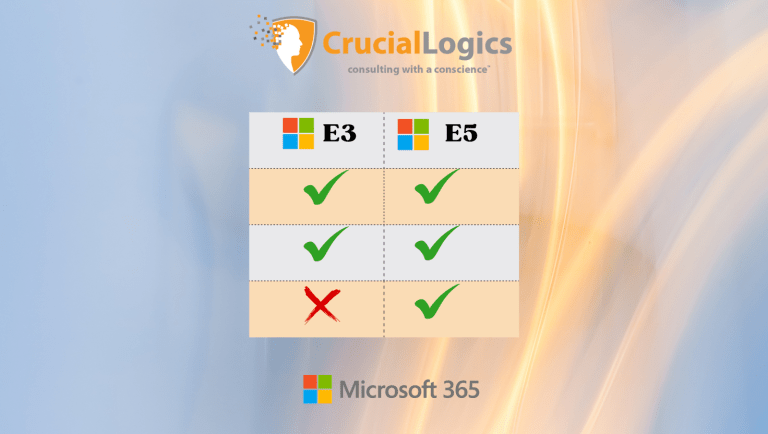Global Secure Access is Microsoft’s Security Service Edge (SSE) solution that provides secure, seamless access to internet resources, SaaS applications and Microsoft 365 services. Built on Zero Trust principles, Global Secure Access addresses the limitations of traditional, rigid VPN solutions by offering a more modern and flexible approach to network security.
This article explores the key features of Global Secure Access, its benefits, and its role in shaping the future of secure connectivity.
The Evolution of Network Security – Microsoft’s Global Secure Access
For years, network security followed a castle-and-moat model: build a strong perimeter and trust everything inside. VPNs extended this approach by enabling remote access to corporate networks. With the rapid rise of cloud computing, the need for identity-based security became urgent.
Traditional VPN infrastructures struggled to keep up with the surge in remote work, and security teams began to rethink how to grant access based on user identity, risk level and location. Instead of relying solely on location, access decisions began to factor in user identity, risk level, and context.
This shift gave rise to Security Service Edge (SSE), a modern approach to network security. Microsoft’s Global Secure Access is a key part of this evolution, combining two modular capabilities within Microsoft Entra: Microsoft Entra Internet Access and Microsoft Entra Private Access.
What is Microsoft’s Global Secure Access?
Microsoft Global Secure Access (GSA) is a unified security solution that combines Microsoft Entra Internet Access and Microsoft Entra Private Access to deliver an identity-aware approach and eliminate the reliance on traditional VPNs and firewalls.
Rather than securing entire networks, GSA takes a granular, application-specific approach. It leverages Microsoft’s extensive global network, spanning 140+ regions and 190+ edge locations, to enforce security policies closer to users.
Its deep integration with Microsoft Entra ID (formerly Azure Active Directory) and Conditional Access policies enables adaptive security. Access decisions consider identity, device health, risk level, and behavior, rather than just network location.
The key distinction between Global Secure Access and legacy security systems lies in its identity-first approach. Instead of placing users inside the network and then restricting access, Global Secure Access provides direct, secure access to specific applications based on user identity and contextual factors such as location, device health, and risk level.
This model aligns seamlessly with Zero Trust principles, ensuring that:
- Every access request is explicitly verified.
- Users operate with the least privileged access.
- Security assumes a breach and mitigates risks proactively.
With Global Secure Access, every connection is authenticated, authorized, and encrypted, providing secure and efficient access no matter where users connect.
Microsoft Entra Private Access: Secure Remote Access
Microsoft Entra Private Access ensures secure connectivity to an organization’s applications, file shares, and internal resources. It limits access to the organization’s private resources – not the public internet.
Consider a financial analyst who needs to access an internal financial report hosted in the corporate data center. With a traditional VPN, their device would connect to the entire corporate network, potentially gaining access to the broader corporate network. With Entra Private Access, their connection would be scoped to the financial application.
Built on Zero Trust principles, Entra Private Access enables access to private IP addresses or Fully Qualified Domain Names (FQDNs). This is valuable for organizations with legacy applications that are difficult to modernize or move to the cloud.
Key capabilities include:
- Granular app-level controls – Users access only the applications they need, not the entire network.
- Per-app adaptive security – Access decisions align with Conditional Access policies.
- Modernized authentication – It brings strong identity security to legacy applications.
- Secure connectivity – Supports TCP (Transmission Control Protocol) and UDP (User Datagram Protocol) traffic.
This identity-first approach allows remote workers to seamlessly access what they need without exposing their devices to the broader corporate network.
Microsoft Entra Internet Access: Securing the Open Web
While providing secure access to internal resources is critical, many data breaches begin with threats from the public internet. Microsoft Entra Internet Access addresses this challenge through an identity-based Secure Web Gateway (SWG) that secures all internet and SaaS application traffic.
This component of GSA provides:
- Detailed traffic logging and security analytics.
- Web content filtering based on categories or domains.
- Threat protection against malicious websites and content.
- Conditional Access integration for non-Microsoft SaaS applications.
With its Private Access counterpart, Entra Internet Access creates comprehensive protection for all network traffic, regardless of destination.
Traditional secure web gateways typically operate at the network level, inspecting traffic but lacking user identity and context awareness. Entra Internet Access reinforces this by incorporating identity signals directly into web security decisions.
For example, a marketing professional might need access to social media platforms to perform their job, while an accountant might not. Entra Internet Access can enforce these distinctions based on user identity rather than network location. Similarly, access to sensitive cloud applications can be restricted based on device compliance, risk level, or authentication strength.
This approach also addresses one significant challenge in modern security: the explosion of Shadow IT. Data protection becomes increasingly complex as employees adopt SaaS applications without IT oversight. Entra Internet Access provides visibility into these applications and enables consistent policy enforcement across sanctioned and unsanctioned cloud services.
Another crucial capability is the detailed traffic analytics provided through the Global Secure Access dashboard. This offers unprecedented visibility into network traffic patterns, including relationship maps between users, devices, and endpoints, as well as data on cross-tenant access and top network destinations.
Microsoft Entra Internet Access for Microsoft Traffic
A notable feature within the GSA ecosystem is the Microsoft traffic forwarding profile, which is included with Microsoft Entra ID P1 or P2 licenses. This profile captures and routes traffic destined for Microsoft 365 services (like SharePoint Online, Exchange Online, and Teams) through Global Secure Access cloud services.
This capability offers several unique benefits:
- Source IP restoration: When users access Microsoft services through Global Secure Access, their original IP addresses are preserved in Microsoft Entra ID sign-in logs.
- Universal tenant restrictions: Organizations can enforce policies that prevent users from accessing unauthorized Microsoft tenants with their credentials, reducing the risk of data exfiltration.
- Simplified Conditional Access: Administrators can enforce a “Compliant Network” check for any Microsoft Entra ID-integrated application, limiting access to secure devices.
For many organizations using the Microsoft suite, this capability provides immediate value.
A Modular Application in Enterprise Security
Global Secure Access has a modular design that merges web traffic filtering and secure access to the internet and organizational resources. Here is how it works:
Unified Policies
GSA’s integration with Microsoft Entra ID enables consistent security policies across all applications and resources. The same Conditional Access policies that protect Microsoft 365 can be extended to private applications and internet traffic.
This policy unification solves a common challenge in enterprise environments: policy silos. Traditional security architectures often require different policy frameworks for other types of resources (cloud apps, on-premises apps, internet access), leading to inconsistencies and security gaps. GSA eliminates these silos by providing a single policy framework applied consistently across all access scenarios.
For security administrators, this means significantly reduced operational overhead. Instead of managing separate policy sets in multiple systems, they can define and enforce policies centrally through the Microsoft Entra admin center. When policy updates are needed, they can be applied once and propagated across all access scenarios for consistency.
Comprehensive Security
GSA provides more context-aware security decisions by combining identity, device, and network signals. For example, a user attempting to access sensitive data might be permitted if they’re using a compliant device on a trusted network, but required to use additional authentication if connecting from an unrecognized location.
This adaptive approach allows organizations to implement security measures commensurate to risk, avoiding additional checks for legitimate users while adding protection when warranted by contextual signals.
Another advantage is GSA’s integration with Microsoft’s broader security ecosystem, including Microsoft Defender for Endpoint and Microsoft Sentinel to aggregate signals from each component.
Partner Ecosystem
Microsoft has built a robust partner ecosystem around Global Secure Access, enabling organizations to deploy it alongside existing security investments. This includes:
- Partner coexistence offerings: These integrations optimize the deployment of GSA alongside existing security tools.
- Partner connectivity offerings: Demonstrate interoperability between partner connectivity capabilities and Microsoft’s Security Service Edge solution.
- Partner service offerings: These provide implementation services to help organizations adopt GSA effectively.
This ecosystem approach recognizes that security transformation is a journey, not an overnight switch. Organizations can maintain security investments while gradually adopting GSA components based on their specific needs and timelines.
A step-by-step procedure to implement global secure access
Implementing Global Secure Access follows a phased rollout as follows:
1. Assess Your Current Environment
Begin by evaluating your existing remote access solutions, security gaps, and business requirements. Identify high-priority use cases where GSA could provide immediate value, such as securing remote access to critical applications or protecting users when accessing the internet.
This assessment should include:
- Mapping user groups and their access needs.
- Identifying current security challenges and pain points.
- Cataloging existing applications and their access requirements.
- Evaluating existing security technologies and their integration potential.
The insights gained during this phase will inform the implementation strategy and help prioritize which GSA components to deploy first.
2. Phased Rollout
Rather than migrating all users simultaneously, start with a pilot group to validate the solution. This incremental approach allows the IT team to gain experience with the solution, refine configurations, and address any issues before scaling to the broader organization. It also minimizes disruption to end users, as only a small group is affected initially.
A proof-of-concept (PoC) phase is highly recommended before full deployment. Microsoft provides detailed guidance for running a GSA proof-of-concept, which typically requires up to seven hours to implement, depending on which capabilities you’re testing.
3. Training and Change Management
While GSA generally improves the user experience, any technological deployment requires proper communication and training. Ensure users understand what’s changing, its benefits, and how to get support.
Effective change management should include:
- Feedback mechanisms to identify and address pain points.
- Accessible support resources for users who encounter issues.
- Targeted training for different user groups based on their specific needs.
- Clear communication about the purpose and benefits of the new solution.
Organizations that invest in change management typically see faster adoption and higher satisfaction.
Cross-Platform Support
While initially focused on Windows, Global Secure Access now offers client support across multiple platforms:
- The Windows client is fully supported for Windows 10/11 devices
- Mobile support includes both Android and iOS through Microsoft Defender.
- The macOS client supports devices with Intel, M1, M2, M3, or M4 processors running macOS 13 or newer.
This cross-platform approach ensures consistent protection regardless of the devices your organization uses.
The client is currently available in preview for macOS devices and requires devices to be registered to a Microsoft Entra tenant using the company Portal. Similarly, the iOS client is deployed via Microsoft Defender for Endpoint on iOS and requires devices to be enrolled to enforce Intune device compliance policies.
The Future of Enterprise Security
Global Secure Access represents a shift in approaching security with a cloud-first enterprise environment. By breaking down the artificial boundary between “internal” and “external” resources and focusing on securing access based on identity and context, GSA enables stronger security and improved user experience.
At CrucialLogics, our security philosophy is built on securing your business using your existing Microsoft technologies. To learn more about deploying Global Secure Access, speak with us today.






